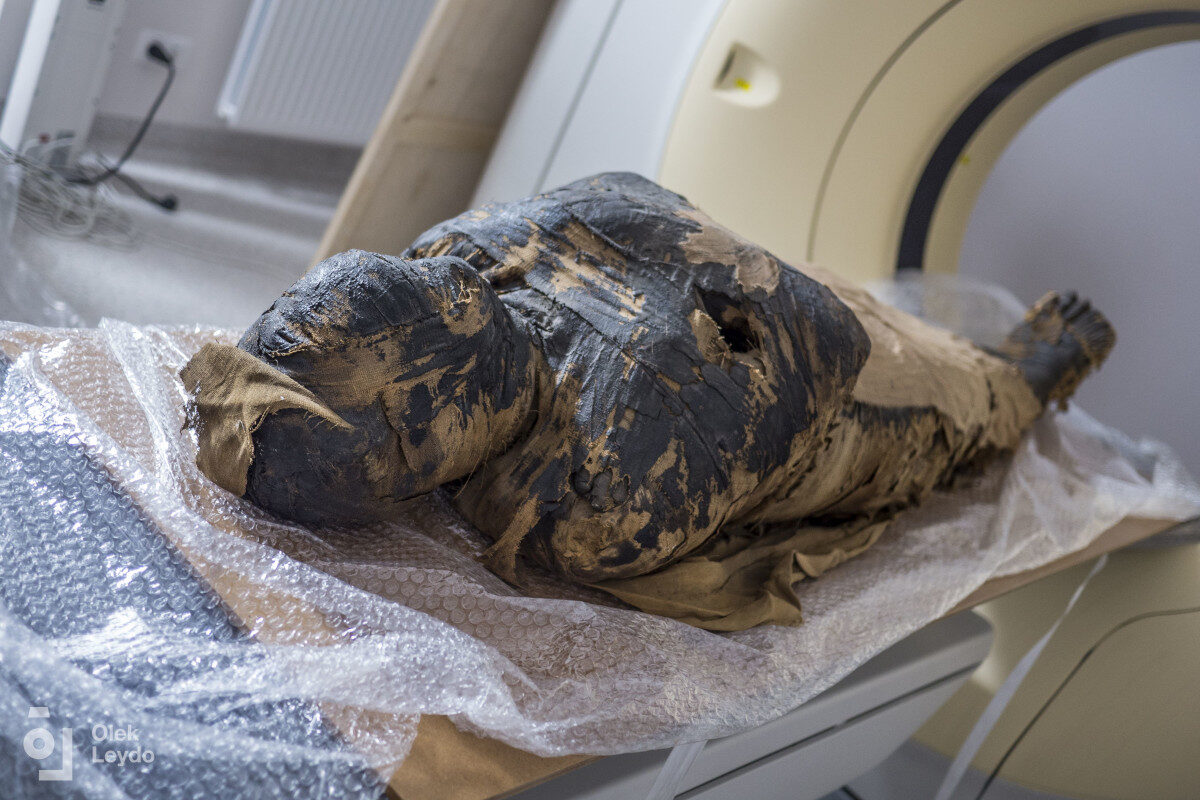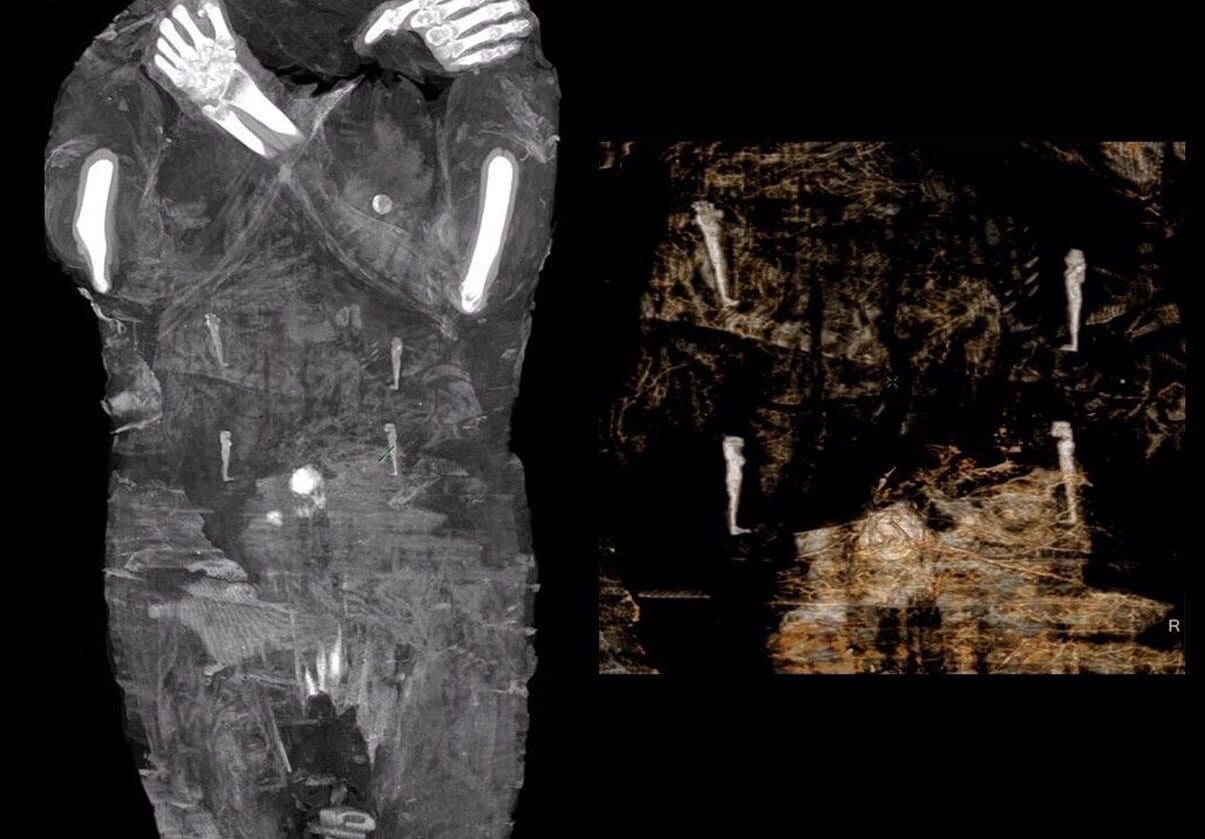
© O. Leydo
Scientists from the Warsaw Mummy Project were carrying out research on the mummified body, which was initially thought to have been an Egyptian priest named Hor-Djehuty until the team revealed it was a woman.
Marzena Ożarek-Szilke, anthropologist and archaeologist from the Faculty of Archaeology of the University of Warsaw told PAP: "We were already at the stage of summarizing the project and sending the publication to print. With my husband Stanisław, an archaeologist of Egypt, we had the last look at the images and noticed a familiar image for parents three children in the deceased woman's abdomen a tiny foot."
Carrying out detailed analyses of images from a tomograph and X-rays, the researchers were eventually able to see the whole foetus which revealed that the woman had been 26-28 weeks pregnant.
Dr. Wojciech Ejsmond from the Institute of Mediterranean and Oriental Cultures PAS said: "For unknown reasons, the foetus had not been removed from the abdomen during the mummification.
"For this reason, the mummy is really unique. Our mummy is the only one identified so far in the world with a foetus in the womb."
So far, the team has been unable to identify the baby's gender nor the reasons for it remaining in the womb.

© Warsaw Mummy Project
In 2016 the same group of experts found that the mummy believed to be the priest Hor-Djehuty was in fact a woman after using computer tomography which meant that the mummies' bandages didn't have to be removed.
The first clue was the 'priest's' delicate skeletal structure. Ożarek-Szilke said: "This was the first hint that we were not dealing with the person identified in the inscription on the coffin, in which the body had been placed."
Subsequent, more detailed anthropological analyses convinced the researchers that there was a woman's body under the bandages, an important clue being the lack of a penis.
The researchers also prepared a 3D visualization of the body which clearly showed long, curly hair and mummified breasts.
The mummy was brought to Poland in the 19th century and according to Dr. Ejsmond, for a long time it was believed that there was a 'mummy of a woman' inside the coffin and was documented in literature of the time.
It was only in the interwar period when scientists deciphered hieroglyphics on the coffin, which clearly indicated its owner the priest Hor-Djehuty, that it was concluded that the coffin contained his remains.
Only since 2016 it is known that it is a mummy of a woman, it was previously exhibited as a mummy of men.
The researchers will now try to unravel the mystery of the cause of the death of the woman.
Dr. Ejsmond said: "High mortality during pregnancy and childbirth in those times is not a secret. Therefore, we believe that pregnancy could somehow contribute to the death of the young woman."
Trace amounts of blood of the deceased are preserved in soft tissues which the scientists now plan to analyse to try and determine the cause of death as some toxins linked to specific diseases can still be detected today.
The discovery was made as part of the interdisciplinary Warsaw Mummy Project. The paper describing the findings appeared in the
Journal of Archaeological Science.
And I believe that the death of the mother may have played a somewhat significant role in the foetus's death.